


 |

|
 |
While the after effects of the heinous Gujarat
carnage are still being felt all over India. The State of Maharashtra
has had a distinction of going through at least three communal riots in one
year. Kalyan was the first followed by Badlapur and now Sholapur.

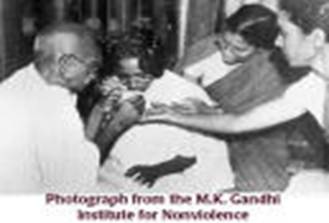
On the evening of January
30, 1948, five months after the independence and partition of

The violent uprooting of
millions of Hindus and Muslims across the borders of
Millions of shocked Indians
waited for more news that night.İ They feared unspeakable violence
if Gandhiís murderer turned out to be a Muslim.İ There was much relief,
also some puzzlement, when the assassin was revealed as Nathuram
Godse, a Hindu Brahmin from western
Godse had been an activist in Rashtriya Swayansevak Sangh (National Volunteers Association, or R.S.S.), which was found in the central Indian city of Nagpur in 1925 and was devoted to the creation of a militant Hindu State.İ During his trial, Godse made a long and eloquent speech claiming that Gandhiís ìconstant and consistent pandering to the Muslimsî had left him no choice.İ He blamed Gandhi for the ìvivisection of the country, our motherlandî and said that he hoped with Gandhi dead ìthe nation would be saved from the inroads of Pakistan.îİ Godse requested that no mercy be shown to him at his trial and went cheerfully to the gallows in November 1949, singing paeans to the ìliving Motherland, the Land of Hindus.î(Dr. Shirin J Wadia, 1972. Terrors in India)

More then half a century
later, many Indians feel that R.S.S. has never been closer to fulfilling
its dream.İ Its political wing, the Bharatiya Janata Party (Indian
Peopleís Party, B.J.P.), the most important among the ìSangh Parivarî (the ìfamilyî of
various Hindu nationalist groups supervised by the R.S.S. who has
dominated the coalition government in New Delhi, India since 1998.İ Both,
Atal Bihari Vajpayee,
In the last five years,
the Hindu nationalists have conducted nuclear tests and challenged
Pakistan to a fourth and final war with India.İ They have taken a
much harsher line then previous governments with the decade long
insurgency in the Muslim majority of State of Kashmir, who is backed by radical Islamists in
İİİİİİİİİİİ The Hindu nationalistsí attempts to stoke Hindu fears about Muslims also appear to be succeeding among many of Indiaís disaffected voters.İ In December, the B.J.P. won elections in the western State of Gujarat, despite being blamed by many journalists and human rights organizations for the vicious killings of more than 2000 Muslims in Gujarat early last year.
 İİİİİİİİİİİİİİ
İİİİİİİİİİİİİİ 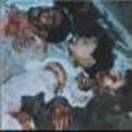 İİİİİİİİİİİİİİ
İİİİİİİİİİİİİİ 
İİİİİİİİİİİ The worst violence occurred in the commercial city of Ahmedabad: ìbetween February 28, 2002 and March 02, 2002, more than 850 people had been killed. Onofficial estimates put the death toll as high as 2000. İThe attackers descended with militia-like precision on Ahmedabad by the thousands, arriving in trucks and clad in saffron scarves and khaki shorts, the signature uniform of Hindu nationalists (Hindutva) groups.İ Chanting slogans of incitement to kill, they came armed with swords, trishuls (three pronged spears associated with Hindu mythology), sophisticated explosives and gas cylinders.İ They were guided by computer printouts listing the addresses of Muslim families and their properties and embarked on a murderous rampage confident that the police was with them.İ In many cases, the police led the charge, use gunfire to kill Muslims who got in the mobsí way.İ The attacks against the Muslims in Gujarat have been actively supported by state government officials and by police. î (Human Rights Watch, report December 2002)
 İİİİİİİİİİİİİİİİİİİİ
İİİİİİİİİİİİİİİİİİİİ 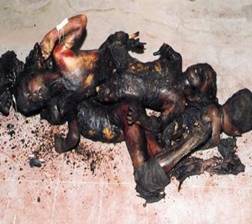 İİİİİİİİ İİİİİİİİİİİ
İİİİİİİİ İİİİİİİİİİİ 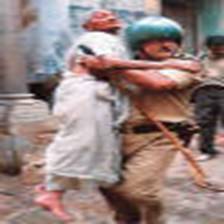
İİİİİİİİİİİ The scale of violence was matched only by its brutality.İ Women were gang-raped before being killed.İ Children were burned alive.İ Gravediggers at mass burial sites told investigators ìthat most bodies that had arrived were burned and butchered beyond recognition.İ Many were missing body parts, arms, legs, and even heads.İ The elderly and the handicapped were not spared.İ In some cases, pregnant women had their bellies cut open and their fetuses pulled out and hacked or burned before the women were killedî (Samir, Naik, June 10, 2002. Huryana News)
İİİİİİİİİİİ Narenda Modi, the chief minister of Gujarat, who is also a member of the R.S.S., explained the killing as an ìequal and opposite reactionî to the murder in late February of almost 60 people, most of whom were Hindus activists, by a mob of Muslims.İ The Human Rights Watch report disputed this defense, charging that the Hindu nationalists had planned the Gujarat killings well in advance of the attack on the Hindu activists.İ It cited widespread reports in the Indian media that suggest that a senior Hindu nationalist minister sat in the police control room in Ahmedabad issuing orders not to rescue Muslims from murder, rape and arson.
İİİİİİİİİİİ The attacks
on Muslims are part of concerted campaign of Hindu nationalist organizations
to promote and exploit communal tensions to further the BJPís political
rule (a movement that is supported at the local level by militant
groups that operate with impunity and under the patronage of the
state).İ The groups directly responsible for violence against Muslims
in Gujarat include the Vishwa Hindu Parishad, the Bajrang Dal,
the ruling BJP, and the umbrella organization Rashtriya Swayamsevak Sangh
(National Volunteer, RSS), all of whom collectively form the sangh parivar (meaning family of
Hindu nationalist groups).İ These organizations, although different
in many respects, have all promoted the argument that because Hindus
constitute the majority of Indians,
İİİİİİİİİİİ It seems truer after Hindu nationalists implicated in Indiaís worst pogrom won sate elections held in Gujarat in December 2002 ìThis is profoundly shameful and disturbingî said Praful Biwai, a widely syndicated Indian columnist.
 İİİİİİİİİİİİİİİİİİİİİİ
İİİİİİİİİİİİİİİİİİİİİİ 
İİİİİİİİİİİ Not much is
known about R.S.S. in the
İİİİİİİİİİİCity of Sholapur with a population of 800,000 people with glorious history of martyrdoms during anti-colonial struggles and labor movements. The people of this city enjoyed independence decades before the country (from May 9th ñ 11th 1930) had become independent. The Sholapur Municipality is the place where the tri-color fluttered for the first time in the country. The city paid the price with the blood of four martyrs, namely, Mallappa Dhanshetti, Kurban Hussain, Jagnnath Shinde and Kisan Sarda. Sholapur similarly had a glorious history of radical labor movement. It was the labor who despite Gandhiís deliberate ignoring them had struck work when Gandhi was arrested; burnt liquor shops; attacked police outposts, law courts, municipal buildings, and the railway station; and ran a virtual parallel government which led to imposition of the martial law. It is Sholapur that contributed Dr. Kotnis to Chinese peoplesí revolution. The city had history of communal amity in history. In that sense it is not a place which is expected to easily give in to communal passions. Sholapur today hardly reflects its past glory. The city that prided on its cotton textile mills and other industries has lost its shine with closure of them. İ
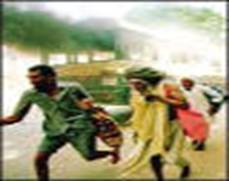 İİİİİİİİİİİİİİ
İİİİİİİİİİİİİİ 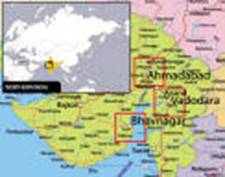
During the resent riots over 50,000 workers have been thrown on roads to fend for themselves. They have been seeking their lives with petty jobs in competition with each other, very much like Ahmedabad. The incidence of Muslims among these workers was relatively more than the Hindus.
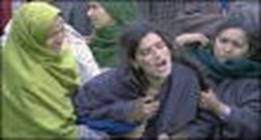 İİİİİİİİİİİİİİİİİİ
İİİİİİİİİİİİİİİİİİ 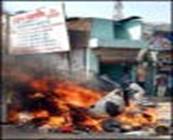
İİİİİİİİİİİ The developments in recent times have overtaken it. Sholapur did experience many minor communal disturbances during the last two decade, viz., in 1982, 1989, and 1992 and now a major one in 2002. The current riot surprised many because its root cause was some derogatory utterances of some Christian preacher in distant America about Prophet Mohammad and a protest voiced by a minor Muslim leader through his small paper. The result was a riot between Hindus and Muslims that took hundreds of lives, maimed many, destroyed property worth Crores (10s of millions of Dollars), rendered many jobless homeless and above all killed the mutual trust between people who lived fairly amicably for years.İ
İİİİİİİİİİİ Fears
about the rise of militant Hindu nationalism, present since the day
Godse killed Gandhi, this have been particularly intense since the
late1980ís, when the Congress (the party of Gandhi and Nehru (Prime
Minister of India 1942-1960) that had ruled
The
questions remains as to how such innocuous reactions to some thing
so distant can lead to such a serious civic disturbance; who played
what role in the process, how did the State respond to the needs
of the victims etc. remains unanswered.İ The ostensible reason for
the riots appears to be the derogatory comments made by one conservative
Muslims gathered for the morning prayer at a Masjid in Sahara Nagar, some Muslim leaders made speeches on the issue raised by Bandh. This inspired the Muslim youth gatherings to go around propagating for observing the Bandh speeches. İThe first incidents of rioting took place in the Sahara Nagar area at around 10-30 AM. It spread to Asaranagar, Rubynagar and then to Kumatha Naka, Daji Peth. The processions sprang up from these areas shouting slogans in support of BJP. İOne such procession started from Kontam Chowk under the leadership of Tajuddin Moholkar. This procession turned violent by the time it reached Madhla Maruti Square. The people in the procession hurled stones at Maruti temple and towards the Goddess in the pandal in its area. It is said that these processions went on rioting and burning shops on their way.
İİİİİİİİİİİ In Saraf Bazar the business men came out on roads and stone throwing ensued between the two mobs. The mobs then turned towards Tilak Square where one Mr. Nadaf, the owner of the Nadaf Mattress Factory fired from his revolver at the mob. This enraged the mob and it burnt his three storeyed shop and house. İFurther devastation at his place occurred because of the explosion of the nine gas cylinders at his house.İ Around the same time, a mob attacked a panda of Shraddhanand Navratra Mahotsav Mandal in Vijapur Ves. The police had to resort to firing in air to disperse the mob. However, some shops in the area were looted and burnt. The riot spread to Shukrawar Peth, Shaniwar Peth, Mangalwar Peth, Bali Ves, Tarti Naka, Tuljapur Ves, Vishranti Square, Market Yard, Joshi Galli, Baba Quadri masjid and Navi Peth area. There was a heavy stone throwing on the mobile van of police and as reported some policemen also were injured in the stone throwing. Police enforced Art. 144 around quarter after one in the afternoon but the rioting still continued unabated. In the Begumpeth area they maligned the goddess-idol of the Siddheswar Peth Navratra Mandal and broke a Ganapati idol there.
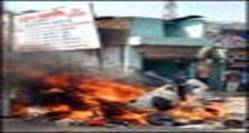 İİİİİİİİİİİİİİİİİİİİİ
İİİİİİİİİİİİİİİİİİİİİ 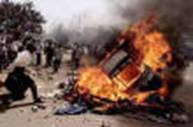
İİİİİİİİİİİ They looted many houses in that area and burnt a few vehicles. There was burnings in Padmashali Square, Rahul Gandhi Slum, Sakhar Peth, Jodbasavanna Square, Juna Boramani Naka areas. The mob used soda water bottles, stones, bricks extensively.İ The rioting was thus widespread. Curfew was imposed in six police areas. The police resorted to firing at seven places in Vijapur Ves, Panchkata and Shastri Nagar areas on the very first day. There were three deaths in police firing. İMany of people were injured in the rioting. Five people, viz., Bilal Bidri (35), Bade Pir Adil A. Razak (20), Muhibub Sheikh, Chandrakant Mhetre (35) and one unknown person succumbed to their injuries at the hospital. M. D. Sheikh is projected as a key figure in the unfortunate episodes of riots in India. He had floated an organization called All India Muslim Vikas Parishad (MVP) some six years ago and has reportedly appointed himself its president. He also started a daily news paper and has been running it for the last four years. İHe is said to have close contacts with some political bigwigs in the government so much so that he had two rooms in a MLA hostel at Mumbai at his disposal. İ
For the past couple of years he had floated many branches of his Muslim Vikas Parishad and put up signboards all over Sholapur in the style of Shiv Sena. M. D. Sheikh appears to be a controversial personality. He is hated by some as an ambitious, arrogant and impatient person. He is said to have no particular following in Muslim community and his Muslim Vikas Parishad to be just a billboard organization and him its self appointed president. He indulged in yellow journalism and is accused of extortion using his paper as a threat.
On the other hand, various Muslim youth that I randomly spoke to on line said that ìhe was a good man, trying to do something for the communityî. Many of them surprisingly said that they did not know about his Bandh call. İNone expressed that deep devotion as to give an impression that they would die for him. İThis riot was bigger in spread as well as intensity than any in the public memory. People recount two riots that took place during the last two decades. One was in 1982 when a procession was taken out at the time of conference of the Vishwa Hindu Parishad and the second was again during a procession for celebrating the birth centenary of Dr. Hedgewar in 1989. Even in 1992 in the aftermath of demolition of the Babri Masjid, stray incidents of stone throwing and burning had taken place. Compared to these incidents the recent riots were really fierce.İİ
The killings and devastation happened on the first day. İThe pattern of devastation is unbelievable, it is possible that attempt to enforce Bandh might have sparked off clash from Muslim side but it is unlikely that they had planned for it. Firstly, MVP did not have the strength to do that. Secondly, their protest was against a Christian preacher and did not relate with the Hindus. Thirdly, the beatings that they received do not reflect any preparation on their part. İOn the contrary, the speed with which the Hindus ëreactioní took place all over Sholapur impels one to see an organization and plan backing the action.
As per the Muslim Vikas Parishad, although October 11 was declared as Bandh since morning a protest meeting was organized at 2 PM in Vijapur Ves Square which is situated area where majority of Muslims lived. As Mr. Faiz Quadri, who did not have much liking for Sheikh said that ìSheikh had taken out a Muslim group that people should gather at some place to give a memorandum to the Collector voicing their protest.î The Bandh had a mixed response in the Muslim area itself.
 İİİİİİİİİİİİİİ
İİİİİİİİİİİİİİ 
The activists of MVP therefore were going around canvassing for the Bandh in lanes and wards of Muslim colonies. They may have asked Hindus also to shut their shops. Everybody however looked forward to the afternoon meeting. Suddenly around 10.00A.M. until 10.30 AM the riots broke out in the extended city areas of Asara Nagar, Ambedkar Nagar, Vishnu Nagar, Nai Jindagi etc. Soon after, around 11.15 AM big Muslim shops in the market areas of the city were set on fire. Much before the protest meet, thus Sholapur was already aflame.
When the activists of MVP started coming towards the venue of their protest meeting at the Vijapur Ves Square, police drove them away in view of the tension in the city. The scuffle ensued and perhaps the enraged crowd attacked the decoration for the Goddess of Navratra celebrations in Vijapur Ves and Begumpeth areas. This incident took place barely 10 meters away from the police areas.İ Soon 10 rickshaws and a cloth shop were set on fire. Thereafter, full fledged communal riots broke out all over the city.
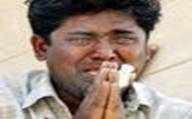 İİİİİİİİİİİ İİİİİİİİİİİİİİİİİİİİİİİ
İİİİİİİİİİİ İİİİİİİİİİİİİİİİİİİİİİİ 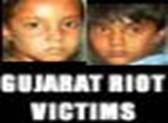
Indeed there was a hazy reflection of Gujarat riots at most of the places in the areas where majority of Hindus lived there was so severe repression on Muslims that they had to flee their homes. Shanti Nagar, a slum having about 100 houses, 12 of Muslims and the rest of Hindus, all alike in look but provided a simple identification along community lines. İThose with locks belonged to Muslims and those with people were of Hindus. These poor power loom workers, slogged 12 hours a day just for their meager survival, had erected a Masjid there in a 25 feet x 12 feet tin shed. The miscreants had attacked that symbolic structure with such vehemence that not even a single sheet could be reused. The place where they installed Quran Sharif had a pinch of ashes of burnt paper. The people had run away. İAt some distance from the Masjid, Imran an eight year old boy showed us how his house was attacked that night. He enthusiastically conducted us exactly to the houses from among the similar ones around to show us the damage inflicted on ìHamare Musalmanî.
At some distance from this cluster lay a factory that made napkins and employed 20 workers now in complete shambles, with its machinery lying in disarray. It was the only factory that belonged to a Muslim among many around. There was no mark to distinguish it from any other but for the ownerís identity. But it was smartly singled out and burnt.İ
 İİİİİİİİİİİİİİ
İİİİİİİİİİİİİİ 
The same features reminding of Gujarat were encountered in Venugopal Nagar, a predominantly Hindu area. Muslim shop were skillfully picked up and burnt sparing the adjacent Hindu ones. Yassim Abdul Aziz Sheikh, who worked as a security officer in Hotel Marriot, Saudi Arabia showed us an empty cubicle which a few days back was Imran Medical Stores. His borther in law, salim Jamadar showed us the surrounding shops doing regular business to illustrate how only Muslim shops were torched and Hindu ones were spared. How police did not respond to their calls or how fire brigades reached late. They did not spare even the Pan Tapari of Abdul Razak Mehboob Nadaf or a STD booth of Ismail Habeeb Patel. In adjacent Nagendra Nagar, Kumtha Naka, Azim Mhd. Kasim Attar, a bangle shop owner told us how his shop was first looted and then burnt down. In Swagat Nagar, they burnt A. S. Tamboliís for petty repairs but skillfully spared the more inflammable timber mart belonging to a Hindu. İ
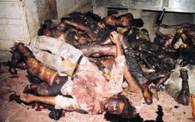 İİİİİİİİİİİİİİİİİİİİİİ
İİİİİİİİİİİİİİİİİİİİİİ 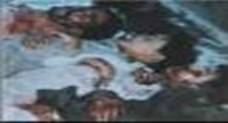
On the net you can see the burnt shanties interspersed the slum scape. you donít have to ask any more because you know they had to be Muslimsí! Far from these extended city areas are found the same thing done to the bigger Muslim shops.
In Begumpeth Kamal Hussain Bharamiya Nadaf, a Bedsheets merchant narrated the same story is repeatedly heard in the distant slums of Dixit Nagar, Swagat Nagar, or Shanti Nagar. That the crowds come with shouting slogans ìJai Bhavani, Jai Shivajiî and attacked people; while poeple prayed for police help it never came; or that at some places police kept watching as the hoodlums looted and burnt their property. S. M. Salarís shop in the Bazarpeth (East Mangalwari Peth) described how his shop was broke opened, burnt and the next day while the curfew was on it was looted. Chhagan Bhujabal, the Home Minister who reviewed the situation during curfew happened to see the shop being looted by people while police looked on. He claimed to have a video where these things are recorded.İ This was the only Muslim shop dealing in the grain and edible oil merchandise. The other shops belonged to Marwaris, Komtis, etc. were not even touched. A short distance away, we saw the historical house of the biggest Sawari in Sholapur, known as Badi Maulali Sawari Ki Durgah having been completely demolished.
In all 13 Masjids were reported having been attacked. They suffered various levels of damages. Either among the dead or injured the proportion of Muslims was far more than that of Hindus. The search operation that was carried out was full of biases. Muslim colonies and slums were raided and police did not spare even the kitchen knife or sickle blades and took them away as dangerous weapons. For example, in Shastri Nagar, the recovery of big stockpile of arms claimed by police and relishingly published by the newspapers with flashy headlines mostly included Sattors (a heavy knife for cutting meat), Knifes, iron rods etc. which were the production tools of the people living there. In the raids people complained of inhuman treatment from police. In the arrests that followed also reflected police bias in clear terms. Among the 2000 odd people that are picked up by the Police, 80 percent were reportedly Muslims. Many of them had a share of Police torture.
Except for a case of stabbing of Shiv Sena Shakha pramukh Chandrakant Mhetre in Vishnu Nagar and burning of house of Narsingh Mengji, Ex-MLC of BJP there was no case of significant damage from Muslim mobs that we come across. İThere were of course allegations of goddess idols being broken, the photographs of some of them having been already published by some papers.İ They generally narrated how the attacks by mobs and eventually killing people. İ
Nobody in Vishnu Nagar was prepared to talk to anyone questioning. Some people outside Vishnu Nagar however reported that murders were executed by Hindu people taking cover of the riots. It was beyond our means to verify this.İ With regard to burning of Narsingh Mengjiís houses you will be shocked to see the ferocity with which it was executed against this significant loss on Muslims side. İAlmost entire cityscape was strewn with the burnt houses and shops belonging to Muslims. The damage suffered by Muslims was far worse than that by the Hindus. It is clear that the Hindu side of rioting was led and conducted by the cohorts of Sangh Pariwar, i.e, Shiv Sena, VHP, Bajrang Dal etc. and caused maximum damage. But instead of catching them for their crime, (it is not at all difficult knowing them, having been shown on TV in their full action) the police had arrested their victims.
İİİİİİİİİİİ Shastri Nagar is a colony of some 17000 people out of which approximately 13000 were Muslims. Most of the Muslim inhabitants of Shastri Nagar are Qureshis (khatiks) associated with slaughter and sale of meat for living as can be seen from many Mutton shops lining the main street. The others were Bagwans (Gardeners), Mistris (masons) and Bakers.
The colony is situated at some elevation and is bounded by a skirting road at the bottom. There is a main street that runs through the colony.İ Shastri Nagar was untouched by the rioting that broke out in Sholapur on the October 11, 2002 until about 4.00 PM when it was suddenly jolted out by the slogans of ìJai Bhavani, Jai Shiwajiî on its edges. They saw a mob of some 5000 people with swords, spears and other weapons behind the posse of police, destroying and burning shops belonging to Muslims on the skirting road near the Maulali Square.(Human Rights Watch, report December 2002).
Alarmed by this noise people on and around the main street collected out of curiosity at the spot where the mob could be seen. Without any provocation the police rushed into the colony and opened fire on the mob from Kumbhar Galli. We have seen many bullet marks which clearly indicate where the shot came from. The spots where the three people fell victims to the police bullets also clearly indicate that police had come up well inside the colony to kill people. All the bullet marks were above four to five feet also establish their intention to kill and not to disperse crowd. One of the victims rather fell at the edge of the lane meeting the main street with a bullet piercing his skull.İ
İİİİİİİİİİİ They corroborate the descriptions of many people in the colony with whom each team member spoke individually. We are of the firm opinion that there was absolutely no reason for the police to open fire on people in the colony. As far as Shastri Nagar is concerned, we have not come across any report on or anybody saying to us about any untoward incident. If the Muslim mob was communally charged, they had a small minority of Hindus entrapped in the colony to experiment with. It is a fact that some 25 shops belonging to Muslims on the skirting street were burnt not very far from a Police Chowki. It is a fact that there were police with guns. The crowd had to be sizable, even if not 5000 strong as described by the inmates of the colony, to dare to touch the colony of 13000 Muslims. İİSince there is no skirmish of any kind reported between the mobs there anywhere it can be reasonably surmised that a sizable mob of people must have done that behind the police protection. And the conclusion is inescapable that the police firing by Sudhakar Kharbas of Sadar Bazar Police Chowki was absolutely unwarranted.İ The firing killed Bilal Bidri (35) an auto driver, Mahboob Sheikh (28), a hide-carrying coolie and Asif Badepir (22) a furniture welder. (Human Rights Watch, report December 2002).
İİİİİİİİİİİ There were other police excesses also that the inmates of Shastri Nagar suffered. One such sample case is worth describing here. Firoze Lalkot, a well built, well dressed youth in his late twenties or early thirties, working in Hotel Tipu Sundri Restaurant narrated what he underwent on that fateful day. His left palm was still bandaged with metal strips. He said he had a curfew pass and gone to get blood from a blood bank for a girl who was in a hospital. While returning with the blood bottles policeman- Gajanan Shankar Kangil stopped him near Rang Bhavan, abused him derogatively in his community name, tore his curfew pass and beat him to police station. In the police station he was again beaten with lathis and had to be shifted to hospital. He claimed that his curfew pass can be checked from the police registers and that he was coming from a blood bank can also be verified from blood bank documents. His voice soured saying, ìHamko shikayat na Hinduonse hai na Musalmanose. Hamen shikayat hai sirf police se.îİ (We have no complaints either against Hindus or against Musalmans. We have complaints only against Police).İ Ajat Khan Mohammad Yusuf Besakh (23), a truck driver was picked up on October 13 and thrashed by the police and admitted in the civil hospital with a homeguard in watch over him. He was discharged from the hospital on October 13, 2002 but his papers did not have any reference that he was admitted there by the police. He lay in his hutment his hand in bandage and a blank look in his eyes. Anwar Mohammad, a 14 year old boy was arrested while going to school on October 11 in the morning. He was released from Juvenile Home on October 25 with his hand in bandage. Such stories of police atrocities abound in Shastri Nagar.
İİİİİİİİİİİ All major Marathi papers take out their edition from Sholapur, viz., Sakal, Kesari, Tarun Bharat, Pudhari, Lokmat, Sanchar etc. Besides, many tabloids are published as dailies and weeklies. We got to see the issues of Sanket, Jam Jam, both weekly papers. Daineek Bandhuprem, that carried the controversial editorial and proposed to observe Bandh in protest of denigrating comments of ñ against Prophet Mohammed was one such small daily newspaper edited by one Mr. Mahboob Daudsaab (M. D.) Sheikh. We studied the role of local news papers by glancing through the issues of various papers on October 12, 13, 14 and 15.
The major events took place on October 11(Friday) and 12 (Saturday). By the following Sunday evening, i.e., October 13 normalcy was approximately restored. Various news papers reported the incidents on October 11 the next day. While Kesari flashed the news as ëSholapur is scorched in Communal Riotsî along with two photographs of rioting and burning Tarun Bharat reported it as ìInferno of Riots in Sholapurî and gave four small photographs. The first one showed the fallen idol of Durga captioned as ìthis was the situation of the Goddess in Telangi Pachhapethî, the second photograph showed a ìShriram Cutleryî shop on the road between Madhla Maruti and Kontam Chowk burning, the third photograph showed the decoration of the public celebration of the ìChha Shakti Pujaî in Vijapur Ves in destruction and the fourth showed a wooden mart in Jodbhavi Peth burning; the letters ìShriram Storesî on its signboard being prominently seen. Tarun Bharat additionally sub-captioned the news in four prominent bars:İ one said, ìCurfew in Cityî, the second said, ìDenigration of the Goddess Idolî, the third said, ìFive Killed in Police Firing, and the fourth said, ìCall for Bandh today by Senaî. Even Kesari used three sub-captions for prominently reporting the incidents that translated, ìFive killed and more than hundred injured in Firing and Knifing incidents, More than 150 shops and houses burnt, loss of property worth crores, Curfew in the entire city and call for Bandh by Sena todayî.
The comparative reading of these two papers clearly reveals Tarun Bharat a paper known for its association with the Sangh Pariwar taking an open communal side in its reportage vis-ı-vis Kesari. Even Kesari could not succeed in keeping its balance fully as the body of the news carried reflected one sided story that may not stand the test of reason.
The bias ran through the body of the report of nearly all the mainstream papers.İ For instance, Tarun Bharat separately captioned ìBroke the Goddess Idolî and vividly described how the miscreants dragged the goddess idol out of the panol for the Saradar Vallabhbhai Patel Navratra Mahotsav Mandal that was situated just five feet away from the Begumpet Police Chowki and broke it right in front of the police. It criticized police for their inaction. The entire narrative gave an impression that only Muslim mobs indulged in rioting and violence. Even the body of the report carried by Kesari gives the same impression that it was the mobs of Muslim youth who went around and indulged in rioting. It may even be the fact but the manner in which Tarun Bharat painted it amounted to faithfully represent its ideological camp even in such an unfortunate and sensitive situation.
The ire against police also came out clear, accusing
it of ineffectiveness and complacence. The entire stance of the Sena-Sangh Pariwar camp
against the police, as revealed later while interviewing several
people belonging to the latter held the Congress led front-government
as responsible for the riots or at least its spread.İ The second
captioned news in Tarun Bharat is
about the ìfiring by a businessmanî. It says one Mr. Nadaf, the owner
of famous Nadaf Mattress Works in Tilak Chowk fired on the mob from
his revolver, which further enraged the mob. It burnt his three story
shop and house. This news is reported even by Kesari in
equally great details. It said that Mr. Nadaf had nine cooking gas
cylinders in his house that burst and destroyed the house and shop. (Uday Mahurkar, Gohra: Horror on 9618 DN,
İİİİİİİİİİİ Besides local news papers, there are video channels that transmit local news on TV in Sholapur. Two prominent channels mentioned by various people to us were Sholapur Vrutta Darshan and Dinman. Both of these channels were reportedly showing broken idols on TV. But they also covered many more things.İ Many people while deposing before us were referring to these channels repeatedly which indicates that they have done a fairly good job in recording the events as they happened. As told to us by Mr. Salar they even showed his shop being looted by people when Mr. Chhagan Bhujabal was surveying the riot affected areas during the curfew on October 12. People in Shastri Nagar said that they saw Shiv Sena and BJP leaders in video while the mob was looting and burning the Muslim shops. Some even claimed that certain leaders could even be seen setting fire themselves to such shops. İIt is not possible to comment on the specific role played by these channels besides being the record of some authenticity.
İİİİİİİİİİİ While in comparison with Gujarat Police the Police in Maharashtra at large appear to have handled the riots much more professionally and brought the situation under control (Reference CPDR report on the Kalyan riots) in a reasonable time, much remains to be desired on a plane of their duty. Both sides, Hindus as well as Muslims, accused the Police of either complacency or bias. Surprisingly, the family members of Narsingh Mengji, the ex-MLC whose house was totally burnt in these riots were particularly angry at the police apathy. They said the longish tale of police inaction while the mobs were attacking their house. Even the powerful Mengjiís calls were falling on deaf ears. It does sound credible in face of the fact that the house was completely burnt. But, there is a tinge of politics in these accusations which did come out on asking one of the members as to why the police did not respond to their calls.
The reason given was the Congress rule in the State. They were particularly angry with one Muslim Police Officer Mujawar who as papers reported enraged Chhagn Bhujabal also to order his removal.İ From preventive angle police appears guilty of criminal negligence. Com Adam Master, Vice President of CITU claimed that he had indicated possibility of communal conflagration in a memorandum submitted to police Commissioner on October 3, 2002 itself. The incident, not much known to the public that prompted Adam master to do this is already referred in foregoing narration. When the office bearers of the Sanghtana and CITU visited the place for investigation they learnt that some BJP leaders had made speeches the previous evening and stressed the need for teaching the ìLandyasî (a derogatory term for Muslims used by the communally minded Hindus in Maharashtra) a lesson on Gujarat pattern. It is said that this threat was repeated to the Sanghatana- CITU team by them again.İ Adam Master reported this matter and cautioned the Police about the possibility of communal riots in near future. Despite this the Police remained complacent so much so that they did not know even of the Bandh declared by the MVP. Adam master has complained this in his memorandum to the chief Minister, Sampark Minister as presented to the Press.
The spark of the riots fell first in the extended city areas which are not very far from the office of Police Commissioner. If the police had been sensitive and alert it was very much possible for them to contain the riots at the start itself. But apparently they were caught unprepared. The rioting went unabated for many hours as we surmise from our data. The responses from police were not forthcoming even when people called them for help. The police has been accused of prejudicial behavior towards Muslims. Almost every victim that we talked to complained that police openly abused them in derogatory terms like Landyas, Gaddar, Deshdrohi, Dahshatwadis etc. At most of the places they stood by when the Hindu mobs looted and burnt the Muslim shops selectively not only on the first day but on the subsequent days when curfew was on. People have said that the local TV channels who have captured some such scenes of rioting where police were seen watching the rioting mobs looting and burning Muslim shops and houses. Some scenes reportedly even captured them with some of the leaders of Hindus around who were directing this gory episode. (ìFresh violence in Gujaratî, BBC News, April 17, 2002 http://news.bbc.co.uk/low/english/world/south_asia/newsid_1934000/1934669.stm (accessed April 17, 2002 report).
The police get completely exposed in their prejudicial action in Shastri Nagar. They have brutally assaulted scores of Muslim youth many of whom were the only bread winner for their families. Many of these youth may be rendered permanently disabled for the work they were doing for their livelihood.İ The manner of conducting subsequent raids and arrests also expose prejudicial role played by the police. At many places police instead of catching the named criminals have arrested the victims and made them main respondents. Such cases can be found in the Maulali Square area. The raids conducted by the police mainly related again with Muslim majority areas. They have confiscated the implements of daily use as deadly weapons. The local papers have celebrated these raids with photographs on the first page without thinking for a moment how can the knives, Sattoors and sickles can be deadly weapons in the house of a Khatik.
There certainly captured even some swords but their number was not big enough to create news.İ We wanted to obtain police version on these issues and tried contacting the police Commissioner Shri Bhagawantrao More on his mobile 9823119000 several time but there was no response. Before starting our field visit we had gone to see him but he was not in office. We saw Shri Tryambake, DCP at his home. He explained that since a magisterial enquiry has been instituted into this incident, the police cannot give any opinion or reveal any information.İ
İİİİİİİİİİİ The ferocity with which Narsingh Menjiís house is burnt stands out as an exception to the general rule of destruction of Muslim property. İA big house situated in a lane with a narrow passage to enter enclosed Mr. Mengjiís office as well as his BPL Agency. The balance house had several rooms for the apparently large family. The house was completely burnt with ceilings in a couple of rooms caved in because of weakening of the metal beams. His family was saved by his Muslim neighbor-Darrod Sir. The incident is reported by all the local papers in great details, some papers like Sanket carrying a special interview of the Ex-MLC Mr. Narsingh Mengji. Mengjis did not hide their hatred for the Muslim miscreants and had a lot of complaint against the police. They repeatedly referred to one name of Muslim policeman as the culprit and also insinuated that the Congress government at the State was sheltering the minority community.İ It appears that in the earlier communal riots also Mengjis had become the chosen target of Muslim mobs.
One had to naturally ask why the entire anger of the Muslim community is directed towards them. The answer did not come from Mengjis. They appeared to accuse Congress for lending tacit support to Muslimsİ in their ire against the BJP. The information that we gathered reveals that Narsingh Mengji is a very vocal advocate of Hindutva politics and represents its face in Sholapur. He is the person who led people from Sholapur area to Ayodhya in 1992 and participated in destruction of Babri Masjid. The BJP leadership in Sholapur talked about teaching lesson to ëLandyasí on the Gujarat pattern as claimed by the CPM leader Com. Adam Master. This cumulative information can profile Mr. Narsingh Mengji and explain how Muslims take him.
İİİİİİİİİİİ Sholapur represents a mini Ahmedabad in many ways. Both were the textile centers. Both have lost their textile mills. Even other industries in both cities are in shambles mainly because of the policies of corporate globalization that the government has been pursuing. Both have thousands of workers thrown on streets, who have set up petty shops in competition with each other. They see their crisis as a result of the presence of ëthe otherí as subtly but systematically prompted by some unscrupulous politicians. The media at their disposal has been directly reinforcing the perception of this ëotherí through consolidation of a particular ëusí. The society is thus getting communally charged everywhere in India. No wonder that the recent riots reflect the same anatomy as of the Gujarat ones. The fact that they could not be similarly devastating as Gujarat may perhaps be due to the difference in the political dispensations in Gujarat and Maharashtra.
The Hindutva forces are unapologetic about Gujarat. They still perceive electoral gains through the communal polarization and the riots as the instruments to achieve it. Modiís Gujarat has done double damage. On the Hindu side it has emboldened people to try it in order to ëteach lessoní to the Muslims and on the Muslim side it created wounded psyche and engendered fear psychosis that could manifest in any unpredictable form. It has mutated social fabric representing plurality not in Gujarat alone but everywhere. Unless civil society comes forward to consciously restore it, such riots may become a feature of our society.İ
The Civil Society can certainly prevent communal strife from germinating at the first place but there is little that it can achieve once it turns into communal skirmish.İ Unless the government and the state are committed to secular values the skirmish will easily transform into riots.
The onus of the government and the State thus is great. Paradoxically, these institutions themselves cannot remain uninfluenced. They also get communalized leading to dangerous consequences as obtained in Gujarat. In Sholapur also the communal bias of police force was reported and could be surmised at many places. To thwart the impending danger, the police force needs to be secularized and sensitized towards their duty to citizens. As a part of this there is a need to restructure it granting sizable representation to various communities so that it becomes difficult for the police to adopt particular communal posture in crisis situations as riots.İ There is a dire need to institute more accountability in the police force than exists today. The police chief should be held personally responsible for every social mishap taking place in his area. It may be advisable to evaluate police action after any such civic disturbance through an independent panel and make their findings public. Needless to say, any inaction and any unlawful action on the part of the police should warrant severe punishment.
İİİİİİİİİİİ An impartial enquiry by an independent agency into the riots and the role of police should be instituted immediately.İ İThe Police officers and policemen who are found responsible for unnecessary firing and killing innocent people should be immediately suspended and tried for murder.İ People who have been named as guilty in the complaints by the victims should be immediately arrested and proper investigation should be carried out to establish their guilt.
İThe riots could have been controlled and the loss of life and property could have been averted if the state machinery had taken preventive measures and acted with due sensitivity after the riots broke out. Since the loss of life and property is due to the failure of the State, the government should compensate people for their loss. Vajpayee has worked hard to build close ties with the United Sates.İ Recent joint naval exercises in the Indian Ocean and frequent visits by Colin Powell seem to confirm Washingtonís view of India as a long-term ally against radical Islamism and China.İ But Vajpayeeís efforts can also be seen as part of R.S.S.ís millenarian vision of India as a great superpower (not just in Asia).İ A clearer sense of his worldview can be had from a long discourse K.S. Sudarshan, the adviser to Vajpayee and Advani, delivered to R.S.S. members in 1999.
İİİİİİİİİİİ In this the address, he described how a new epic war was about to commence between the demonic and divine powers that forever contended for supremacy in the worlds.İ Sudarshan identified the United States as a biggest example of the ìrise of inhumanityî in the contemporary world.İ He claimed that Indiaís exercised the ìgreatest terrorî over America, a theme he had touched on in his praise of Indiaís nuclear tests in 1998 when he said that ìour history has proved that we are heroic, intelligent race capable of becoming world leaders, but the one deficiency that we had was of weapons, good weapons.îİİ He ended his speech by predicting the ìfinal Victoryî of Hindu Nationalism.İ (Takur Rattuar, Gujarat Samachar. Political column January 2003).
The question that arises is that can a small timer politician like M. D. Sheikh with his minor paper like Dainik Bandhuprem and an organization like MVP can on its own heat so influence the Muslim masses as to come on roads and indulge into rioting with such ferocity as described in the Press and narrated by the Hindu victims like Narsingh Mengjiís family.
No reasonable person can answer this question in affirmative. It follows therefore that there had to be some extraneous causes that provided the motive force to both the sides.İ Some of the extraneous causes that could be plausibly pointed out were provided by a chat online by Com. Adam Master, the Ex-MLA and Vice-President of the Hindu Organization. İ
There was a meeting on October 2, 2002 wherein some leaders of BJP made speeches that the Muslims need to be taught a lesson on the pattern of Gujarat. The miscreants in the gathering burnt down two auto rickshaws, one trolley and one motor cycle belonging to Muslims and hurled petrol bombs into some Muslim houses. İThe incident had taken place in Juna Gharkul area on the Hyderabad road. The rickshaw owners being the members of the Lal Bavta Rickshaw Chalak Sanghatana reported this matter to the Sanghatana officials. This incident shows that there was already something simmering on the Hindu side and its trial had taken place just nine days ago. İThe Muslim had a bitter memory of Gujarat alive (the slaughtering of the women and children). There could be many more reasons than these reinforcing the communal passions on both the side, but these appear good enough to understand motivation in rioting mobs.İ The incident of October 2 does not appear much known to people. The only other place that found its mention was in the annexure to the memorandum prepared by Shastri Nagar people for submission to various authorities.İ M. D. Sheikh and the entire leadership of MVP are reportedly in jail.
 |
 |
All of the communities affected continue to live
with deep sense of insecurity, fearing further attacks and a cycle
of retaliation.İ Not included in the this paper are many heroic accounts of individual police
and of Hindu and Muslim civilians who risked their lives to rescue
and shelter one another, and the many peace activities that have
been organized by citizens amidst the ruins of state. The Violence in Gujarat has triggered widespread
outrage in
The Indian government should prevent further attacks and prosecute those found responsible for the violence in Gujarat, including state government and police officials complicit in the attacks.İ The International community should put pressure on the Indian government to comply with international human rights and Indian constitutional law end impunity for current and past campaigns to generate communal violence against Indian minorities.
Assistance from international humanitarian and United Nations agencies is sorely needed for Hindus and Muslims in relief camps.İ The Indian government should seek assistance of these groups and to invite United Nations Human Rights experts to investigate state participation and complicity in the violence in Gujarat.
Bibliography
1) Contempt, perjury proceedings sought against Bhatt, Times of India, November 8,İİİİİİİİ 2001.
2) ìFive
killed as fresh violence hits
3) ìFresh violence in Gujaratî, BBC News, April 17, 2002 http://news.bbc.co.uk/low/english/world/south_asia/newsid_1934000/1934669.stm (accessed April 17, 2002 report).
5) Human Rights Watch, report December 2002.
6) Human Right Watch interview, male Resident of Ahemdabad, March 2, 2002
7) Human Rights Watch, Broken People: Caste Violence Against Inadiaís ìUntouchablesî (New York Times Magazine February 16, 2003
8) Interview (online), Abdul Aziz, Ahmedabad, March 10, 2003
9) Interview (online), Chartoda Kabristan Orginizer, Ahembdabad, March 23, 2003
10) Interview (online), with a forty five year old women resident of Chartoda Kabristan, March 23, 2003
11) Interview (online), (name withheld), Ahemdabad, February 20, 2003
12) Interview (online), (name withheld), Ahemdabad, March 20, 2003
13) Inte Interview (online), (name withheld), Ahemdabad, March 22, 2003
14) K.S. Sudarshan, Vajpayee and Advani, speech delivered to R.S.S. members in 1999.
15) Praful Biwai, Indian columnist, online Interview
16) Praksh Walia, (1980-1984) Home Minister of Kashmir, on line interview.
17) Praveen Swami, ìSaffron Terror, Frontline, March 16-29, 2002
18) Samir, Naik, June 10, 2002. Huryana News.
19) Shirin
J Wadia, PHD (1972). Terrors in
20) ìSeven Hindus killed in Udhampur Attacksî, Press Trust of India, April 8, 2002.
21) Takur Rattuar, Gujarat Samachar. Political column January 2003
22) ìThree killed in India Mob Violenceî, Los Angeles times, March 11, 2002.
23) Uday Mahurkar, Gohra: Horror on 9618 DN,